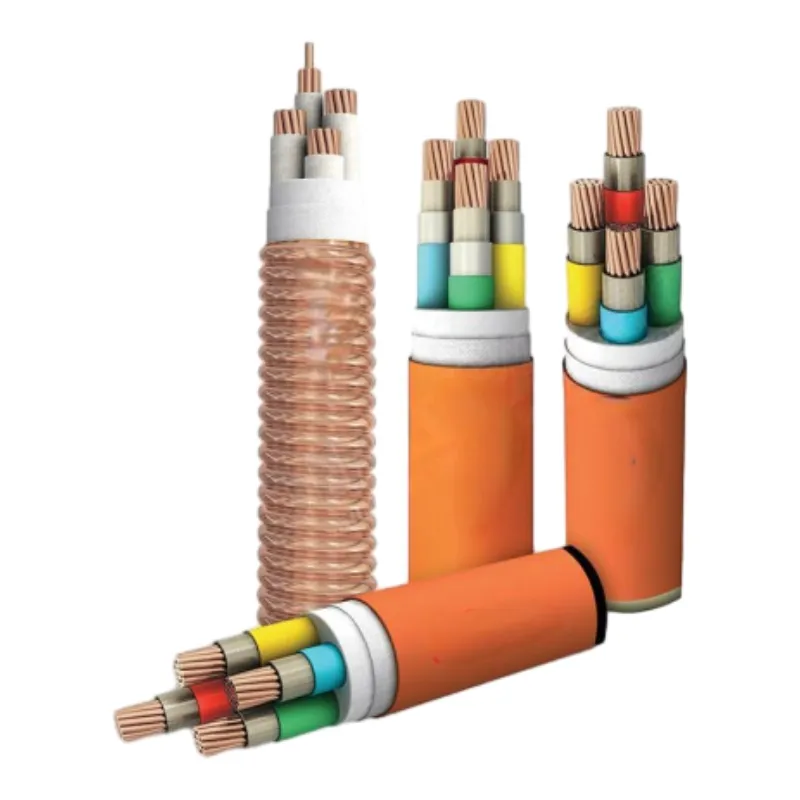9 月 . 28, 2024 22:01 Back to list
Understanding the Basics of Electric Cables and Wires for Everyday Use
The Importance of Electric Cables and Wires in Modern Society
Electric cables and wires are fundamental components of modern electrical engineering, integral to the functioning of countless devices and infrastructures. From the moment we flip a switch to illuminate a room to the operation of advanced technology that powers our communication networks, electric cables play a crucial role. This article delves into the types of electric cables, their applications, and their significance in our daily lives.
Understanding Electric Cables and Wires
At its most basic level, an electric wire is a single conductor that allows the flow of electric current. On the other hand, an electric cable typically consists of multiple wires encased in a protective sheath. This design protects the conductors from environmental hazards and prevents electrical faults.
Electric cables can be classified into different types based on their construction, application, and materials used. For instance, cables can be made from copper or aluminum, both of which are excellent conductors of electricity. Copper is favored for its conductivity and durability, while aluminum is lighter and less expensive, making it suitable for specific applications.
Types of Electric Cables
1. Power Cables These are designed to deliver electricity from one point to another and are used primarily in energy distribution networks. Power cables can be further categorized into low, medium, and high voltage cables based on their transmission capacity.
2. Control Cables Used in industrial applications, control cables transmit signals to control machinery and equipment. These cables ensure that operations run smoothly, enhancing efficiency in manufacturing and other processes.
3. Communication Cables As our world becomes increasingly interconnected, communication cables such as coaxial and fiber optic cables have become essential for telecommunications. They facilitate data transmission over long distances with minimal signal loss.
4. Flexible Cables Often found in portable devices, flexible cables are designed to be bendable without damaging the conductor. These cables are crucial for applications that require movement or adjustment, such as in audio equipment and appliances.
Applications of Electric Cables
electric cable wire

Electric cables are ubiquitous, found in virtually all sectors of society.
- Residential Use In homes, cables are used for lighting, powering appliances, and connecting to the internet. Safe, well-insulated cables are vital for preventing hazards such as short circuits and electrocution.
- Commercial Applications Businesses rely on electric cables for their daily operations, from powering computers to running HVAC systems. The efficiency of these electrical systems directly affects productivity and comfort within the workplace.
- Industrial Use Industries utilize heavy-duty cables to power machinery, conduct control signals, and operate equipment. The durability and reliability of industrial cables are paramount due to the demanding environments in which they operate.
- Infrastructure Development Electric cables are essential in the construction of infrastructure projects such as roads, bridges, and railways. They not only power construction equipment but also ensure that the public services connected to these infrastructures are operational.
The Significance of Proper Installation and Maintenance
Despite their seemingly simple function, the installation and maintenance of electric cables is a specialized task that requires significant expertise. Poorly installed cables can lead to electrical failures, increasing the risk of fires, short circuits, or even electrocution. Regular maintenance checks are essential to ensure the integrity of electrical systems, allowing for early detection of wear and damage.
The Future of Electric Cables
As technology continues to evolve, the demand for more efficient and sustainable electric cables is on the rise. Innovations such as superconducting materials and wireless power transmission are being explored, which promise to enhance electrical systems' performance and efficiency further.
In conclusion, electric cables and wires constitute the backbone of our electrical infrastructure. Their wide range of applications and importance to everyday life cannot be overstated. As we move forward into a more technologically advanced future, the role of electric cables will only grow, underscoring the need for ongoing innovation and adherence to safety standards in their production and installation.
Share
-
Understanding the Differences Between Wafer Type Butterfly Valve and Lugged Butterfly ValveNewsOct.25,2024
-
The Efficiency of Wafer Type Butterfly Valve and Lugged Butterfly ValveNewsOct.25,2024
-
The Ultimate Guide to Industrial Swing Check Valve: Performance, Installation, and MaintenanceNewsOct.25,2024
-
Superior Performance with Industrial Swing Check Valve: The Essential Valve for Any SystemNewsOct.25,2024
-
Industrial Swing Check Valve: The Ideal Solution for Flow ControlNewsOct.25,2024
-
You Need to Know About Industrial Swing Check Valve: Functionality, Scope, and PerformanceNewsOct.25,2024